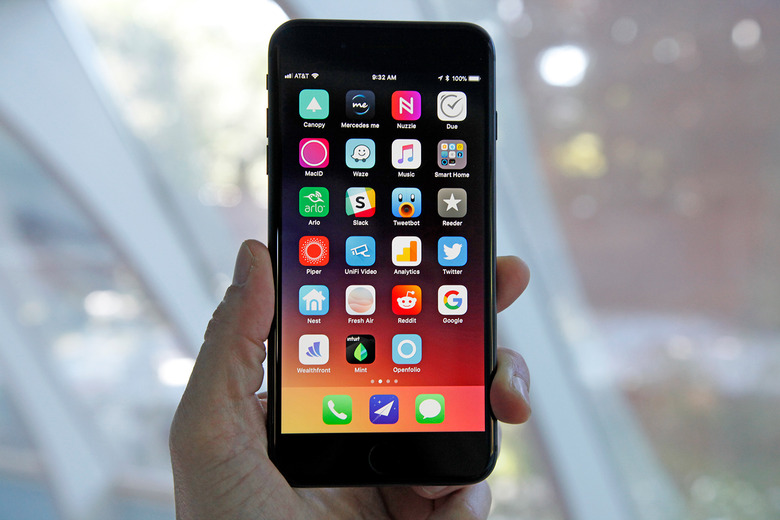Everything You Need To Know About The Apple Vs Qualcomm Battle
The Apple vs. Samsung legal battle was one of the most important patent-based wars in mobile tech until last year when Apple helped ignite what looks like a crusade against Qualcomm. It's all happening over a piece of technology that most users have no idea about, a chip that turns an iPod touch into an iPhone.
And it sure looks like Qualcomm can't come out on top.
Not only does Qualcomm make modems that allow devices to connect to a cellular network for calls and data, but the American company invented technologies that allow such connections. Without a cellular modem, the iPhone and any other smartphone would only connect to the internet when a Wi-Fi network is available.
Because Qualcomm was at the forefront of the mobile revolution, some of its inventions were turned into standards that are used by everyone in the business. And everyone pays royalties to the chipmaker for intellectual property rights, on top of actual hardware purchases.
So how did it all start? It's Bloomberg Businessweek that provides an extraordinary look at the chronology of the events, revealing details that we would otherwise miss. After all, unlike the Apple vs. Samsung battle where Apple accused Samsung of copying the iPhone, this is a legal fight over a critical piece of technology that must sound really boring to consumers.
The report reveals that Apple's Tim Cook may have convinced Samsung Vice Chairman Jay Y. Lee some two summers ago to be more aggressive with Korea's Fair Trade Commission (KFTC) which started its Qualcomm investigation in 2014.
Apple, a long-time Qualcomm customers, did not like the fact that Qualcomm asks for royalties worth 5% of a device's price, which can amount to $30 for the iPhone, but much less for a cheap Android phone made in China. Apple drove that price down to about $10 per phone, but one of the conditions it agreed to was not to challenge Qualcomm's patents. That's not including the actual cost of the modem, which can retail for $18 for the most recent iPhones.
In August 2016, the KFTC interviewed Apple, prompting Qualcomm to say that Apple's statement contained lies. In the month that followed, Qualcomm stopped paying its usual rebates to Apple, raising that royalty rate.
By the end of 2016, the KFTC fined Qualcomm $850 million for "abuse of market dominance." Three weeks later, the US FTC announced its own inquiry into Qualcomm's anticompetitive tactics. Apple followed with a suit of its own three days after the FTC, asking Qualcomm to pay $1 billion in damages and to reduce its royalties. In April, Apple cut off its royalty payments to Qualcomm altogether, which amount to some $2 billion per year. In addition to the immediate financial loss, Qualcomm's market cap was shattered by these events.
In early July, Qualcomm countersued Apple, saying the company infringed on six patents related to battery life and graphics processing and asked the US International Trade Commission (ITC) to ban iPhone imports. The ITC will issue a verdict by September 2018.
Other companies then voiced their support for Apple, including Samsung and Google. Huawei is believed to be the second major smartphone maker to withhold royalty payments to Qualcomm.
Led by Apple, the battle against Qualcomm might be a long one, considering that you can't make a smartphone on this planet and not pay Qualcomm its fees. It's a fight Apple would have liked to bring forward many years ago, Apple's general counsel Bruce Sewell told Bloomberg. But, at the time, it lacked an alternative to Qualcomm's chips. Now, there's Intel which is making its own LTE modems now, although they're not quite as performant as Qualcomm's.
This particular quote perfectly explains Apple's problem with Qualcomm:
On another table behind Sewell, an Apple representative has laid out two versions of the iPhone 7: One model, which has 128 gigabytes of memory was sold by Apple for $750. The other, which has 256 GB, sold for $100 more. How is it fair, Apple asks, for Qualcomm to charge as much as $5 more for the technology in the more expensive phone, given that the two devices are otherwise identical?
Philosophically speaking, anyone can charge whatever they want for a product. That's why Apple can ask $100 more for a memory upgrade, that costs Apple a lot less than that. Qualcomm set its own prices for years, and Apple — and everyone else — was willing to pay them. The problem with Qualcomm's technology is that it's an essential tech that should be priced "fair, reasonable, and nondiscriminatory," or Frand — again, that's the royalties, not the actual hardware. And that's why Apple is able to sue Qualcomm, and why regulators in various countries have already fined the company or are investigating it.
On the other hand, minimizing the importance of cellular connectivity, as Apple seems to do in this interview, seems out of place. "Cellular connectivity is important," Sewell said, "but it's not as important as it used to be." Yes, you can get online over Wi-Fi and use plenty of iPhone features without a cellular connection. But let's not forget that Apple sells hundreds of millions of iPhones every year, not iPod touches. And it's because of that cellular technology that people prefer to buy iPhones.
Whatever happens in the future, it's clear that Apple will keep paying Qualcomm a fee for essential cellular technology used in an iPhone, even if the LTE chips will be made at Intel or in-house. But Qualcomm might have a tough time imposing its current royalty model to Apple and everyone else in the business.
Both parties do not seem to be ready to settle at this time, and it looks like both are ready for a long fight.
Read the full report at this link.
